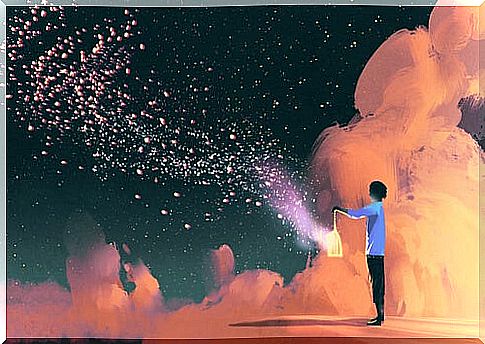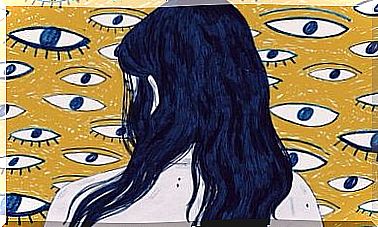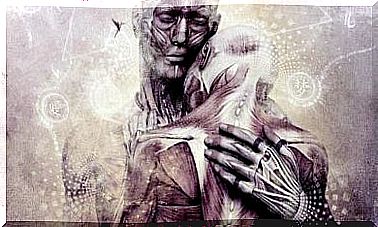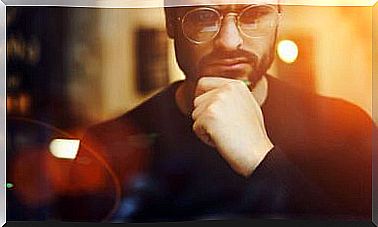My Coping Strategy Made Me Stronger

One gentleman who was worth listening to when he spoke was Albert Einstein. Fortunately, he left great lessons for us, such as his wise phrase “we cannot solve problems by thinking the same way as when we created them.” Following his reasoning, we can ask ourselves, what strategy to use to deal with problems?
Within a large number of possibilities, there are two fairly solvent strategies, or so the people who use them estimate. On the one hand we are going to talk about the famous strategic Problem Solving. On the other, of the paradox of the lamppost. Are you signing up for this trip?
What strategy to use to deal with problems?
Facing problems successfully will make you learn. It is always said that failure is a good school, but doing things well is too. Thus, if we get the solution right, apart from the successful resolution of the problem itself, we will surely receive valuable lessons.

How to deal with problems with the strategic Problem Solving
The strategic Problem Solving is a model applicable in any field and with different levels of difficulty. To put it into practice, we have to know its three basic steps: the definition, the objective and face the strategy of the problem itself.
Definition
The first phase is the definition. Before looking for solutions we have to know what exactly is the problem we are facing. So it is good to understand its nature.
An appropriate way to define a problem is by asking ourselves what it consists of, where it is, when it appears, who may be the culprits, how and why it happens … That is, it is good to spend time identifying each detail.
objectives
Once the problem is defined, we must know the objectives. Thus, instead of remaining in the permanent complaint of not finding a way out, we have to ask ourselves what result we would like. For example, if in six months we have a job interview and we know that they are going to ask us for a certain knowledge of a foreign language, our objective will be set at the level they ask for. Maybe later we like the language and want to know more, but the initial objective is that.
Take your problems for a spin and view them as challenges rather than threats. Thus, by understanding an obstacle as the first and not the second, you will be using a source of motivation that produces much less stress and more satisfaction.
Tackle the problem strategy
Once we are fully aware of the problem we have, it is time to establish a strategy to solve it. We know our objectives and the magnitude of the obstacle. It is time to think about the method.
That is, you will reach a point where you will have to see which strategy is best to achieve your goals and overcome the problem. Here are various techniques that this method proposes:
-
Take the problem to the limit. Sometimes for something to get better it has to get worse first. They say that after the storm, calm comes. Perhaps going to the limit and hitting bottom can be a solution to gain momentum. For example, when there is a fire many times it is not worth saving anything because the price we can pay for doing so is too high. We will have to wait patiently for the firefighters to extinguish it and perhaps then throw everything away to rebuild it from scratch.
-
Backward Planning. Another proposed strategy involves running the solution path in reverse. That is, imagine that everything is solved, and begin to study how you got to that point, then the previous one, and the previous one, etc. That is, as if you were rewinding a VHS tape that facilitates the strategy to follow. For example, mathematicians use this strategy a lot to make proofs: they start from what they want to demonstrate to see if they can arrive at what is already proven.
-
Look into the distance. You can go beyond the problem. For this you have to visualize your ideal life and project your mind on it. Thus you will find strength and courage to overcome uncertainty and locate the freedom to see the best solution.
The paradox of the lamppost
This problem-solving technique comes from a book called “The Art of Making Your Life Bitter.” In it, Paul Watzlawick, with enough wit and humor, poses certain mistakes that we all seem to make at some point.
In the paradox of the lamppost, the author tells the story of the drunk who looks for his key next to a lamppost. A policeman sees him and helps him search for a while. But there comes a time when the authority asks him if he is sure that is where he lost the key. At that moment, the drunken man replies that no, that he went further back, but it is too dark.
Sometimes when analyzing a problem, we need to know if we are looking in the right place for solutions. There are few times when we get confused in a “lamppost” over and over again. Maybe one day it was useful and it served us, but it does not mean that it will be reusable forever.

However, our brain works this way naturally. Look for mental resources from the archive that were once useful. That is why it is important to try to go beyond simple problems, analyze them in their proper measure and find the best solutions, which we do not always have to know or have in hand, no matter how much experience there is at our disposal.
Now, you already have new tools to deal with problems. However, a knife is useless if the person holding it does not use it. It is your turn to put them into practice using knowledge, ingenuity, and good cheer.








